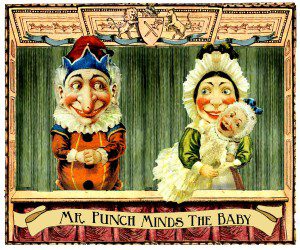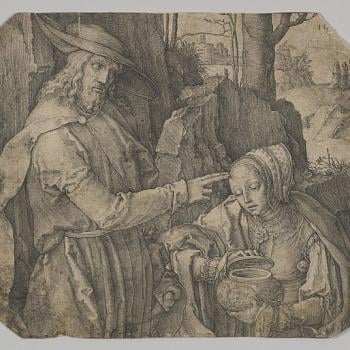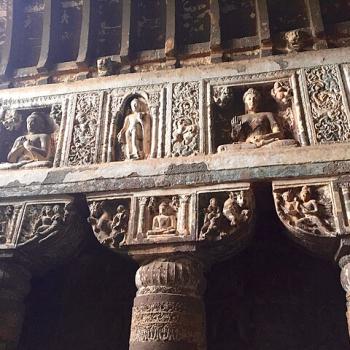As it happens, three hundred, fifty four years ago on this very day the renowned diarist Samuel Pepys recorded an account of witnessing “an Italian puppet play that is within the rayles there, which is very pretty, the best that I ever saw.” an early English version of the Punch and Judy show.
Those who follow such things consider this the “birthday” of the English twist on the Italian Commedia dell’arte, which has its origins about a century earlier. According to Wikipedia, “Punch and Judy is a traditional, popular, and usually very violent puppet show featuring Pulcinella (Mr. Punch) and his wife Judy. The performance consists of a sequence of short scenes, each depicting an interaction between two characters, most typically Mr. Punch and one other character (who usually falls victim to Mr. Punch’s club). It is often associated with traditional British seaside culture. The various episodes of Punch and Judy are performed in the spirit of outrageous comedy — often provoking shocked laughter — and are dominated by the clowning of Mr. Punch.”
While too violent for my tastes, (interestingly the stick the Punch carries is called a slapstick, and, well, as you know that word has carried over into another use in our culture…) the part that captures my imagination is the suggestion the characters have roots vastly earlier than the seventeenth or even sixteenth centuries. Rather they represent some motifs of European folklore, and particularly of what appear to be near universal trickster tales.
Digging into just what Punch and Judy might mean, I stumbled upon a talk by the late eccentric right wing British political philosopher Jonathan Bowden, who put his fingers on a couple of themes that make some sense to me. One, is how often at the end the devil makes a walk on. “Often, the closure of the piece is the Devil. The Devil comes, again, from the mystery plays and medieval license. Again, he’s a sort of figure of nemesis in part to inculcate the idea that Punch is partly heroic when he’s actually transgressed against moral norms and against authority and is a showman and a shaman and a trickster and a number one card in the tarot and the one who’s always out of step and the one who’s cards are thrown on the table. Yet, he’s the one who does for the Devil.”
So behind the violent comedy could be something more.
I began to look a bit more deeply and found the cultural anthropologist and folklorist Paul Radin, who noted how the “Trickster is at one and the same time creator and destroyer, giver and negator, he who dupes others and who is always duped himself… He possesses no values, moral or social, is at the mercy of his passions and appetites, yet through his actions all values come into being… The Trickster myth is found… among the ancient Greeks, the Chinese, the Japanese and in the Semitic world. Many of the Trickster’s traits were perpetuated in the… mediaeval jester, and have survived… in the Punch-and-Judy plays and in the clown.”
So, really, just a pause to note the currents of myth and folklore passing along the years.
But, one thought does linger.
For me its that unsettling stick. I suggest there may be dark areas of the human heart that it speaks to, areas we may not like to look at, but probably should. In an unpleasant twist on that truism that children are not born racist but must be taught that particular kind of hate, children must be taught not to hit others.
I suggest the currents of violence in Punch and Judy have other elements, other directions we might push, but for this briefest meditation, just holding up the uncomfortable realities of how violence is indeed one of our first responses to problems is itself worthy.
To know ourselves is to see the ways through to new possibilities.
Maybe the only way.
For me, for many, many years, I’ve thought the “original sin” of our humanity was our cutting the world in two. It both makes us like gods and throws us out of the garden. Still think that’s true. But, right up there next to it, snuggling into the breast of our creatureness like a viper is this other thing, our inclination in the moment to a violent fix.
To deny it is to let it fester. Because it isn’t going away.
To see it, opens those new possibilities.
And, maybe some other angle. For instance the stick has a place in traditional Zen practice. It has positive uses, but also it was used for punishment for most of its history. Here in the west I believe that facet has almost completely disappeared, while it has continued to be used because it has other possibilities. Some of which actually continue to carry some elements of that violent past.
Rich. Complicated. The stuff of dreams and nightmares.
Sort of like trickster herself, himself, winking out at us from the mists of antiquity, winking at us while waving the stick, winking while speaking truths we may or may not want to hear.
A trickster thing.
Two cents on an overcast Monday morning…













